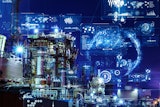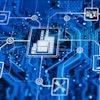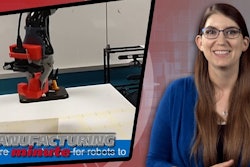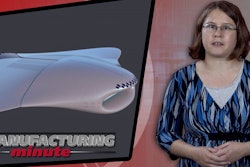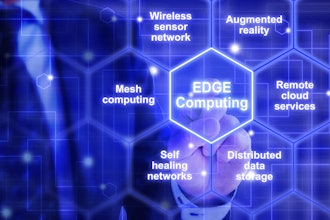As consumers, we’ve grown to expect everything as a service, everything on demand, and to only pay for usage as opposed to making up-front investments. This is enabled by multiple advancements in technology and behavioral changes in society. We are at a point where these same shifts are rapidly coming into the industrial sector, with the potential of massively changing how business is done - a new industrial revolution that is coined Industry 4.0.
Siloed assets, which come from poor system integration, lack of real-time data analytics, process duplications and other causes, have been the longstanding industry norm in the industrial and manufacturing sectors. Even with the implementation of the Industrial Internet of Things (IIoT), machines still lack the capability to talk to one another and systems are running on bifurcated proprietary programs. Over the years, we've become accustomed to these barriers, but that doesn't mean it has to stay that way.
Key Players of Interoperability
The key components of the future industrial era will include technologies that are just now emerging. Automation, the IIoT, Equipment-as-a-Service (EaaS) and other as-a-Service offerings (even blockchain) will play key roles in bringing about efficient futures for factories and facilities. Let's take a look at how all of these technologies will work together to create a new industrial landscape:
Automation
First, let's start off with automation, a trend that has been around for decades. In facilities, automation often means programmable logic controllers (PLCs) that are able to partially or fully automate tasks that would otherwise be completed by hand by a technician. For example, a temperature gauge shows that the temperature on a boiler is getting too high and a release valve needs to be opened. Previously, this would have been handled by a technician, but now the PLC is used to monitor the gauge and automatically perform the task as needed. While automation as a base concept may be nothing new, the ability to remotely control numerous devices and collect data via the IIoT takes automation to a new level. Couple this with advancements in robot technologies, and the future production line will only require 3-5 operators working the floor.
IIoT
The IIoT takes automation and applies a sort of network effect. Now, instead of a single PLC automating a single process, imagine a variety of devices meshed together on a network. Instead of having numerous PLCs which handle just basic logic flows, you have an AI-based network able to crunch data, deliver insights and automatically make changes to derive new, more efficient processes. With connected devices, the need for systems monitoring or operation is further removed, and machines can deliver data on operating conditions so repairs can be performed long before unexpected breakdowns.
Equipment-As-A-Service
Software-as-a-Service enabled technology providers and purchasers to focus on the value that is delivered and remove the overhead that is required to install and maintain the software. A similar trend is happening in industrial assets. At the end of the day a facility’s core is not maintenance; it is production of goods. OEMs are changing their business models to better align with their customers' goals. Instead of paying for a new pump, the facility will pay for gallons of water that have been pumped.
EaaS is enabled by advancements in connectivity and predictive maintenance, which substantially lowers the risk of breakdown in machines and streamlines their operation and maintenance.
This allows businesses to focus on operational expenditures rather than capital expenditures. That is, instead of buying machines, they pay for usage or output in infinitely varying sizes. Everything is measured precisely using the data provided by the IIoT. Continuous diagnostics, meanwhile, keeps everything up and running smoothly.
Usage Based Insurance
A similar shift to a “pay as you go” model is already happening in the insurance market. If a certain machine is continuously monitored and is in an “acceptable” condition, there is a 70 percent lower risk of breakdown that may lead to larger production losses. Therefore, the owner should pay a lower premium than someone that is constantly ignoring a machine that is in “danger.” If a chiller is off during the winter should a facility pay for its insurance?
This on-the-fly calculation of premiums requires full transparency into machines’ health and a direct connection between the facility and the insurance company to relay that information in real-time.
Blockchain
Finally, blockchain may be the technology to tie this all together, with the ability to automatically manage micropayments. If services are being provided and altered automatically, we expect the charges to also be fully-automatic and seamless. Every device in an industrial system can have a digital wallet that dispenses or accepts micropayments. This way, an OEM can bill for water output through blockchain without having to employ a billing staff or system.
Tying it All Together
Let’s go back to the pump in our previous example. This pump is owned by the manufacturer, which charges the facility by the gallon. Smart sensors track the usage and enable the OEM to bill the pump’s digital wallet directly per gallon via the blockchain. Insurance is also charged based on the usage and health condition of the machine. A continuous diagnostics platform provides constant feedback to the insurance provider, which charges the pump’s digital wallet directly.
When a developing malfunction is detected, the continuous diagnostics platform automatically orders spare parts, using the pump’s digital wallet to pay for the goods. The service technician is also alerted and a repair is scheduled -- a repair that is billed directly to the pump’s digital wallet.
This enables the facility owner to better track the costs of each asset and switch providers on the fly without a hitch. Everything is automatically connected and seamlessly billed.
Inching Towards Progress
While many of these technologies exist today, their ability to sync together to create the future industrial world is yet unrealized. The future manufacturing environment will include smart assets and innovative technologies that talk across systems to streamline efficiencies, optimize production and create a better, more synchronized industrial order.
Saar Yoskovitz is CEO and Co-Founder of Augury.
